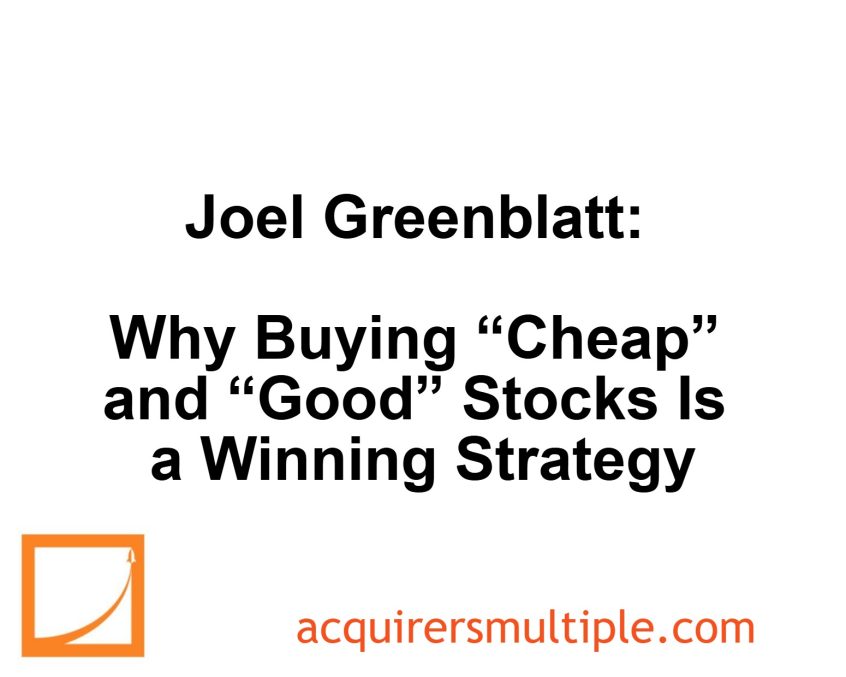In this interview with the RWH Podcast, Joel Greenblatt explains the core idea behind his investment strategy in The Little Book, emphasizing a simple approach of using basic metrics for identifying “cheap” and “good” stocks.
He tested this method, combining these metrics into a portfolio, and it proved successful. Greenblatt acknowledges that investing in undervalued businesses with strong cash flow often results in high returns on capital. He compares the choice between businesses with 30% versus 60% returns on capital, concluding that scaling businesses with steady returns is often a better long-term investment. Ultimately, a good return on tangible capital is key for sustainable growth.
Here’s an excerpt from the interview:
Greenblatt: The fun of The Little Book was that I did not spin the computer thousands of times and say, these two items—cheap and good—that worked the best. I didn’t do that.
I said, “Let me think of a crude metric for cheap. Let me think of a crude metric for good. Split them, put together a portfolio and see what happens.” That was the very first test we ran. It worked well.
I wrote a book about it. It wasn’t meant to say, I spun the computer thousands of times and I came up with this, and this was the best one. I said, “This makes sense.”
Then we did one test, which I think is pretty valid, and it worked incredibly well and in order. So I agree with the work that cheap also works very, very well. It happens to be more volatile, so it depends how you measure returns or risk. I don’t measure risk by volatility either.
It also turns out that if you’re buying big cash flow generating businesses, usually they’re getting good returns on capital. Think about it this way: if you open a store and make 30%… If you open a new store—and I got to update my examples—but if you open a store and earn 30% returns on tangible capital, that’s pretty good.
Not many places in this world you can take money and get a 30% return. So maybe you should open another store. Of course, if you can open a store and earn 60% on capital, that sounds better.
But the real question is: can I open a thousand of those stores that earn 30%, and only three or four stores that earn 60% before that return comes down? Then, which is the better long-term investment? It has to be good enough return on tangible capital.
You can listen to the interview here:
For all the latest news and podcasts, join our free newsletter here.
Don’t forget to check out our FREE Large Cap 1000 – Stock Screener, here at The Acquirer’s Multiple:



